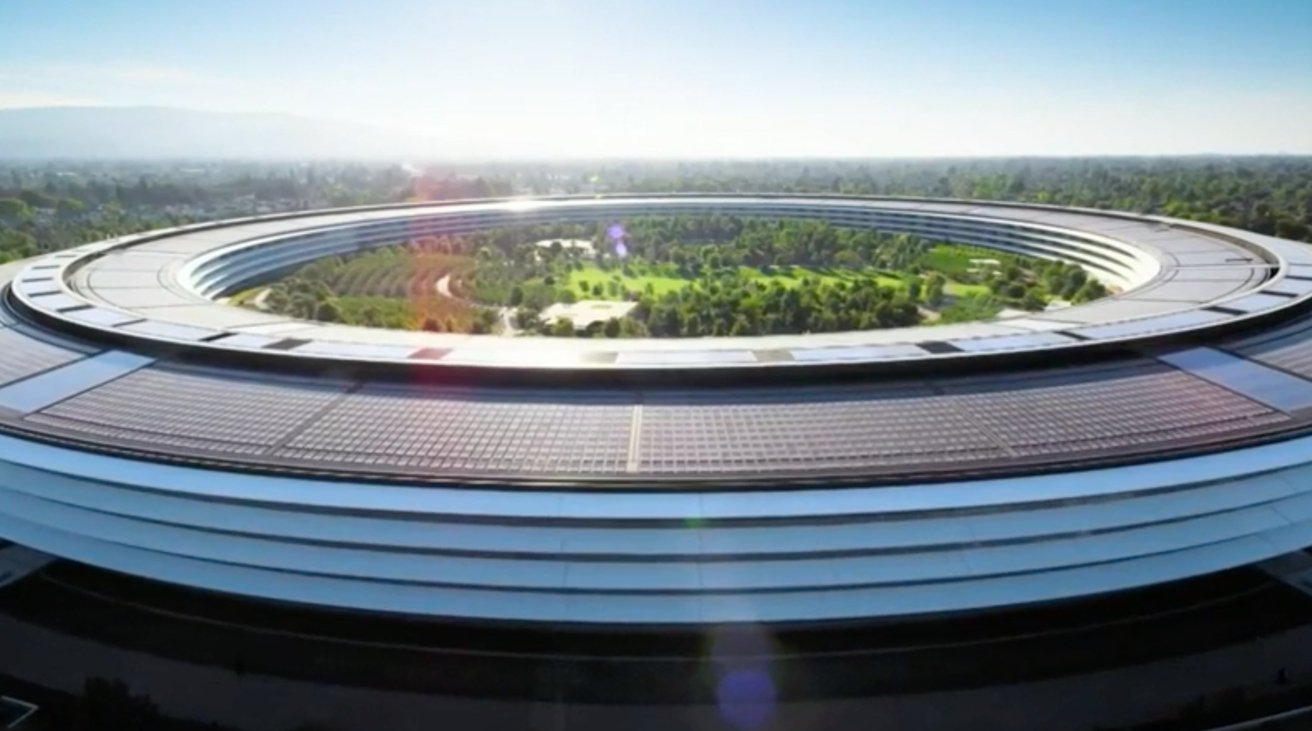Norman Foster, the man responsible for Apple Park's iconic design, sat down for a new interview to talk about that process and his time with late CEO Steve Jobs.
Apple has called Cupertino, California, a home for quite some time. From 1993 until 2017, Apple conducted a majority of its business at the Apple Infinite Loop campus.
However, in 2018, the company officially swapped its headquarters for Apple Park, a massive ring-shaped campus affectionately dubbed "The Spaceship." The building was pitched by late CEO Steve Jobs, and was designed by English architect and designer Norman Foster.
In a new interview from the San Francisco Standard's Life in Seven Songs podcast, Foster sits down and discusses how the project went from the drawing board to reality.
When asked what his favorite story behind the project was, Foster recalled a time when he'd worked directly with Jobs. As many projects tend to do, Apple Park went through many iterations before it was finalized. A half year into the project, Jobs and Foster finally nailed down the design.
"The earliest studies were all very curvilinear, and it was only at a point of crisis when I remember Steve saying, 'Every project needs a crisis. We have to take advantage of it.' And it was at that point that the project morphed into the circle. That must have been 6 or 7 months into the project.
So that circular image enclosing the big green space with the landscape outside, recreating the California landscape, the fruit basket of Steve Jobs' youth growing up, that was the moment."
He says the design was less a flash of inspiration and more of a culmination of a lengthy design process. And the design process is very important to Foster.
For him, a good design should do more than function as a practical space but also as a space to inspire and uplift. It's less about prioritizing form over function but rather considering form as part of function — a space's atmosphere is just as important as its plumbing, heating, and cooling.
"I'd argue that an essential part of the function is how it makes us feel. Does it lift our spirits? We know that a patient recovering from surgery, if that patient is in a room with a view, as opposed to facing a brick wall, that patient will leave hospital earlier," he notes.
"As a designer, I'd say it's not about either or. All of those things should be integrated. That's the essence of good design."
And Foster finds the campus' nickname fitting, too. As it turns out, he's a pilot in addition to being an architect and designer.
"All of the newspapers, the periodicals, the reporting, repetitiously, they all, you know, ]the mothership has landed. We have liftoff.' It was all the terminology of space." he says. "And for me, that's very satisfying because space and the world of flight has always been kind of part of my life, particularly flying."
The rest of the interview discusses his design philosophy, his past jobs, and how he came to be an architect.
Apple is planning on adding another campus in North Carolina, though it's not terribly clear when that will happen.
 Amber Neely
Amber Neely







-m.jpg)






 Marko Zivkovic
Marko Zivkovic
 Mike Wuerthele
Mike Wuerthele
 Christine McKee
Christine McKee

 Sponsored Content
Sponsored Content
 Wesley Hilliard
Wesley Hilliard

 William Gallagher
William Gallagher









7 Comments
Foster never built that place. The iPhone did.
It wasn’t foster by himself. It was the culmination of Jobs, Ive, and Foster. Sure, he knew how to architect it, but Jobs and I’ve had the look and feel they were going for. A design collab. But this dude seems happy claiming it all for himself.
Foster also designed the McLaren HQ building in England, which looks a lot like the Apple campus. Search for it on Google Maps. And I still think Apple should buy out McLaren completely, which is the equivalent of Apple in the car manufacturing business. Back when I first started pushing this idea on these forums, McLaren's market cap was around $2B, (less than what Apple paid for Beats) but now it's $4B. Pocket change for Apple.
If Apple does buy McLaren, McLaren should build a new car to fully implement Apple's CarPlay ideas and values, and the car should be called the "McLaren Macintosh." It rolls off the tongue.